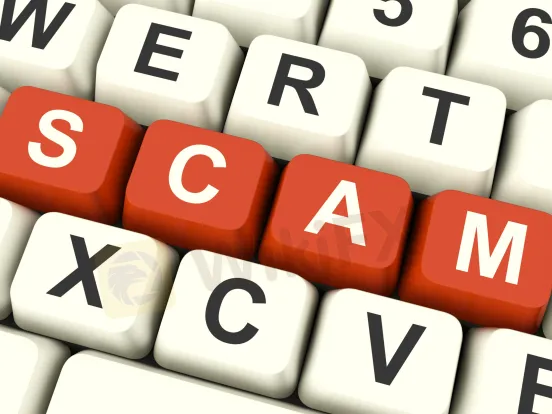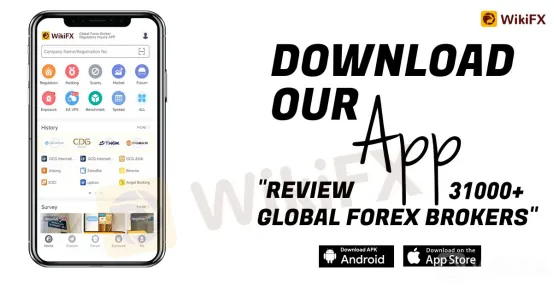简体中文
繁體中文
English
Pусский
日本語
ภาษาไทย
Tiếng Việt
Bahasa Indonesia
Español
हिन्दी
Filippiiniläinen
Français
Deutsch
Português
Türkçe
한국어
العربية
What to Look for in a Forex Scam
Abstract:As of April 2019, the spot FX market, which includes currency options and futures contracts, exchanged about $6.6 trillion each day. 1 With such a large quantity of money moving about in an unregulated spot market that trades instantaneously, over the counter, and with little accountability, forex scams entice unscrupulous operators to make quick money
While many once-popular scams have faded away owing to the Commodity Futures Trading Commission's (CFTC) aggressive enforcement efforts and the founding of the self-regulatory National Futures Association (NFA) in 1982, some old scams persist, and new ones keep cropping up.

The Point-Spread Scam in the Past
The bid-ask spreads were manipulated by computers in an old point-spread forex fraud. The point gap between the bid and ask represents the commission paid by a broker in a back-and-forth transaction. The spreads between currency pairings are usually different. When the point spreads across brokers diverge significantly, the fraud occurs.
For example, some brokers provide spreads of seven pips or more in the EUR/USD, rather than the standard two-to-three-point spread. (Based on market tradition, a pip is the smallest price movement that a specific exchange rate produces.) The smallest difference is the last decimal point, because most major currency pairings are priced to four decimal places.) If you add four or more pips to each transaction, any potential benefits from a good trade might be eaten away by commissions, depending on how the forex broker handles their trading costs.
Over the last ten years, this fraud has died down, but be wary of any offshore retail brokers that are not licensed by the CFTC, NFA, or their home country. When challenged with actions, these impulses still persist, and it's extremely easy for businesses to pack up and vanish with the money. For these computer tricks, many people envisioned a prison cell. However, the bulk of violators in the past have been US-based businesses, not offshore businesses.
The Scam of the Signal-Seller
The signal salesman is a common modern-day con. Retail firms, pooled asset managers, managed account firms, and individual traders who offer a system for a daily, weekly, or monthly fee that claims to identify favorable times to buy or sell a currency pair based on professional recommendations that will make anyone wealthy are known as signal sellers. They boast about their extensive trading expertise and talents, as well as testimonials from others who attest for the person's abilities as a trader and friend, as well as the large riches that this person has amassed for them. All the naive trader has to do is pay over a certain amount of money in exchange for trading advice.
Many signal-seller con artists just take money from a set number of traders and then vanish. Some may suggest a nice trade now and again to keep the signal money flowing. This new swindle is gradually becoming a larger issue. Although there are honest signal sellers that execute trade functions as planned, it is prudent to be suspicious.
Scamming by “Robots” in Today's Market
In some forms of forex-developed trading systems, an old and new swindle manifests itself. These con artists boast about their system's capacity to create automatic transactions that earn large sums of money even while you sleep. Because the procedure is totally mechanized using computers, the new phrase is “robot.” In any case, many of these systems have never been subjected to a formal evaluation or testing by a third party.
The settings and optimization codes of a trading system must be tested while examining a forex robot. The system will create random buy and sell signals if the settings and optimization codes are incorrect. As a result, naïve traders will do nothing but gamble. Although there are established techniques on the market, aspiring forex traders should do their homework before investing in one of these strategies.
Other Things to Think About
Many trading systems have traditionally been fairly expensive, costing up to $5,000 or more. This might be considered a ruse in and of itself. Today, no trader should spend more than a few hundred dollars on a good method. Be especially wary of system marketers who charge outrageous rates in exchange for a guarantee of spectacular outcomes. Instead, seek for genuine merchants who have had their systems thoroughly examined so that they may potentially generate money.

Disclaimer:
The views in this article only represent the author's personal views, and do not constitute investment advice on this platform. This platform does not guarantee the accuracy, completeness and timeliness of the information in the article, and will not be liable for any loss caused by the use of or reliance on the information in the article.
Read more

MultiBank Group Wins Big at Traders Fair Hong Kong 2024
Discover how MultiBank Group, a global leader in financial derivatives, secured three prestigious awards at Traders Fair Hong Kong 2024, highlighting its innovative trading solutions and industry excellence.

WikiFX Review: Is PU Prime a decent broker?
In today’s article, we have made a comprehensive review of a broker named PU Prime. We wonder if PU Prime is a scam or a reliable broker.

Doo Financial Expands Reach with Indonesian Regulatory Licenses
PT. Doo Financial Futures, a subsidiary of the global financial services brand Doo Group, has secured regulatory approval from Indonesia’s Badan Pengawas Perdagangan Berjangka Komoditi (BAPPEBTI).

Investment Scams in Malaysia: Telegram Tops Scammers’ List
In the first 11 months of 2024, Malaysia recorded 5,685 investment scams, with Telegram emerging as the most commonly used platform for fraudulent activities.
WikiFX Broker
Latest News
ASIC Sues Binance Australia Derivatives for Misclassifying Retail Clients
Geopolitical Events: What They Are & Their Impact?
Top 10 Trading Indicators Every Forex Trader Should Know
Why Do You Feel Scared During Trade Execution?
Revolut Leads UK Neobanks in the Digital Banking Revolution
Fusion Markets: Safe Choice or Scam to Avoid?
SEC Approves Hashdex and Franklin Crypto ETFs on Nasdaq
North Korean Hackers Steal $1.3bn in Cryptocurrency in 2024
Currency Calculator


